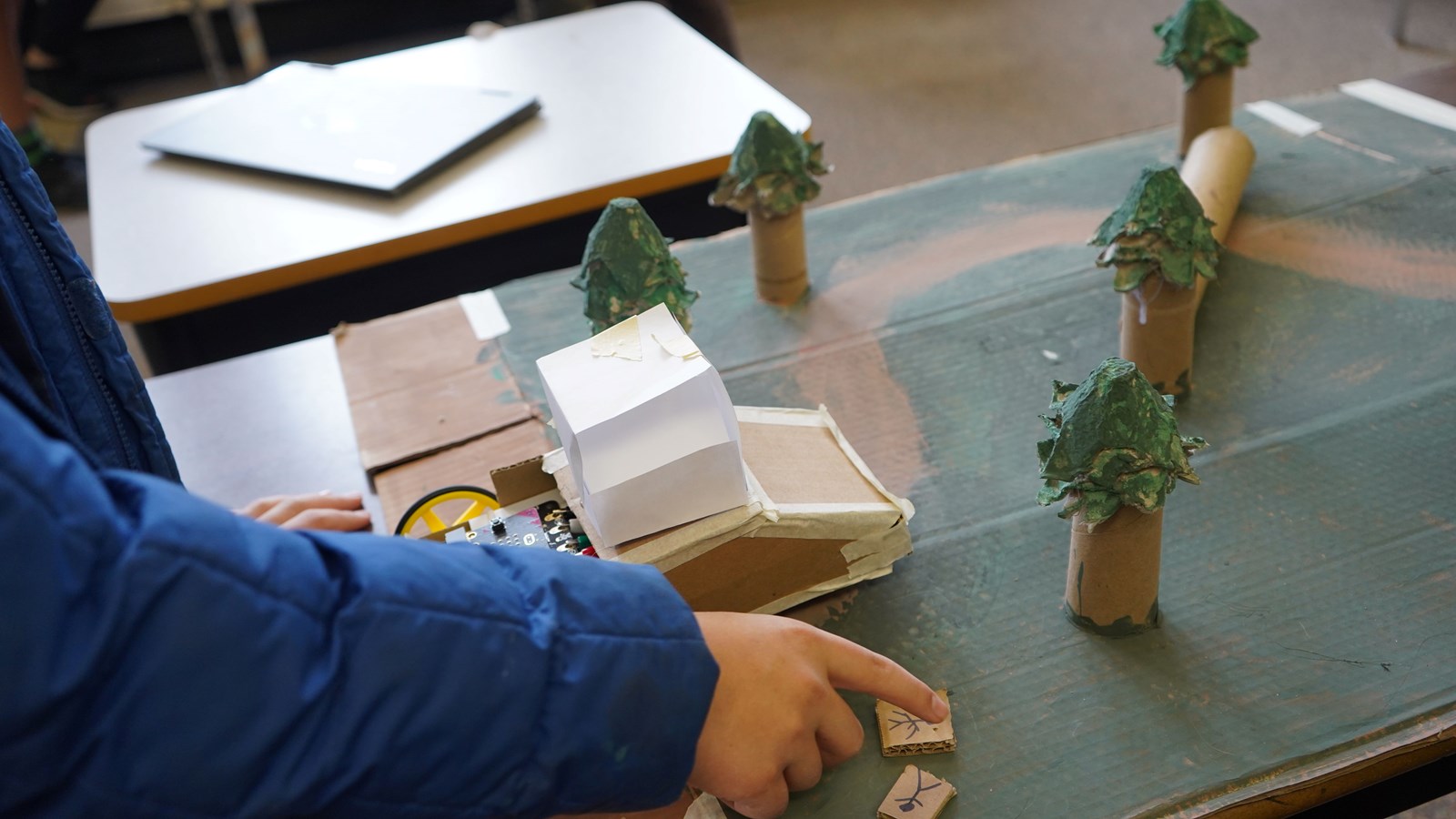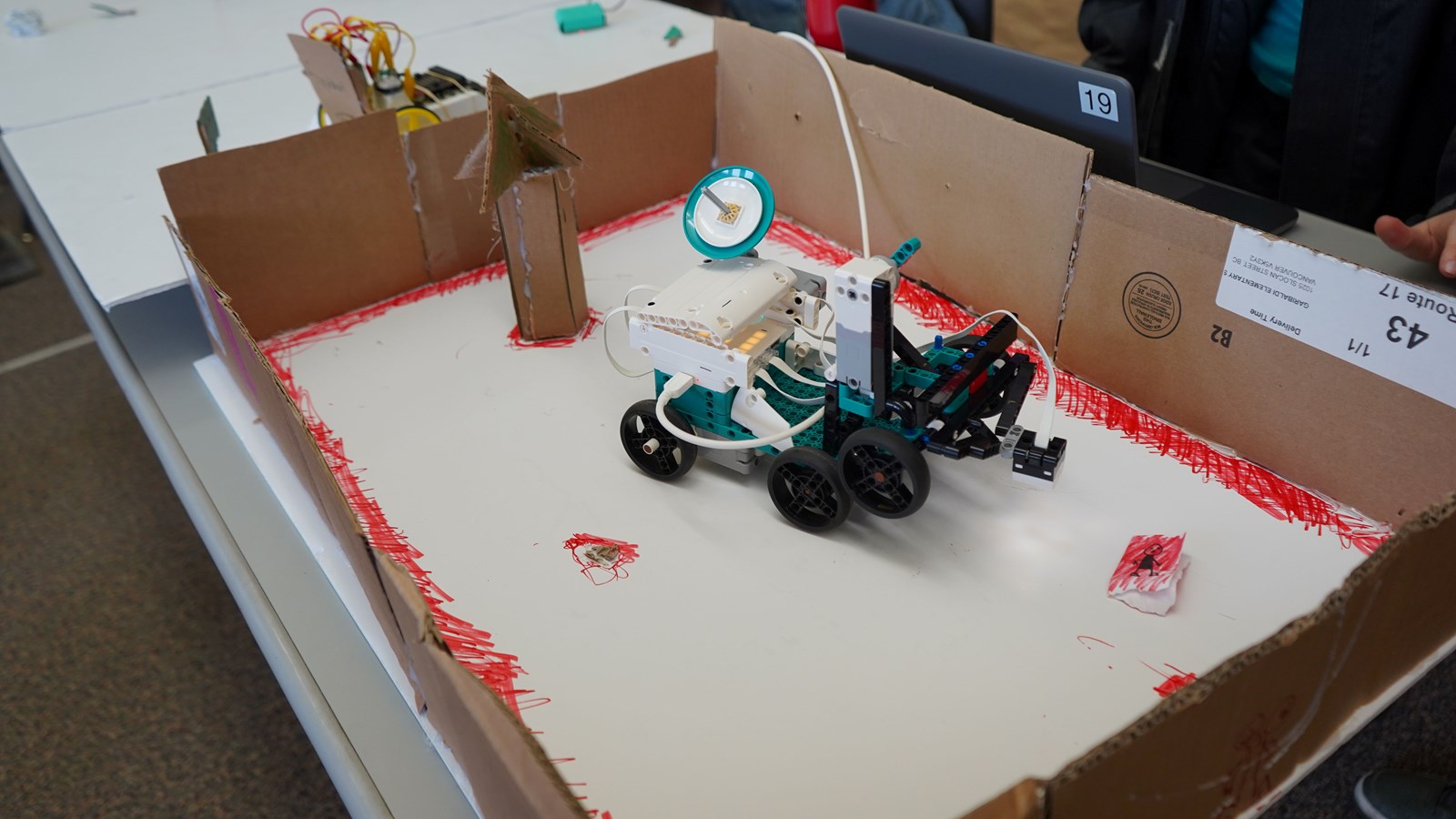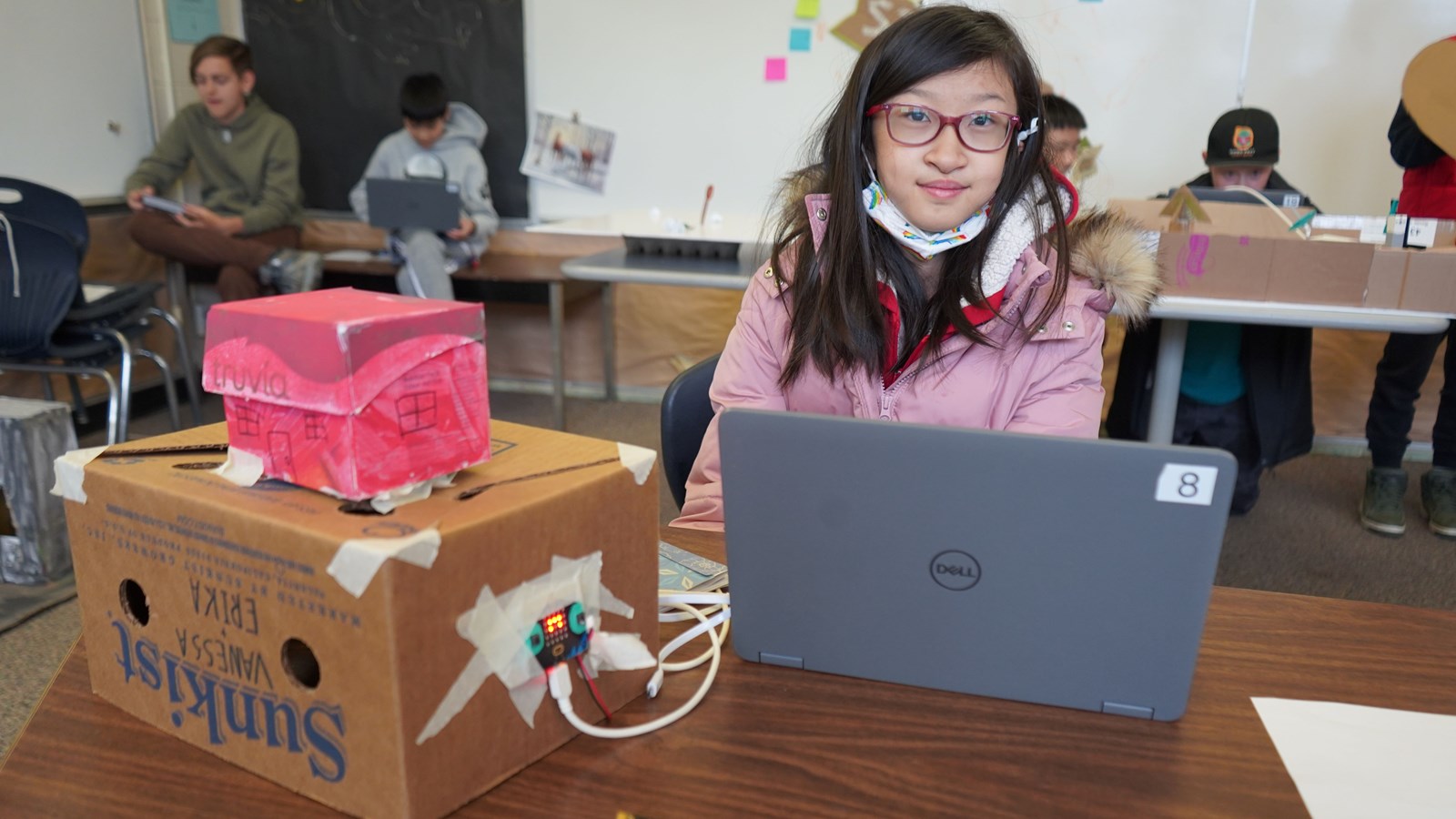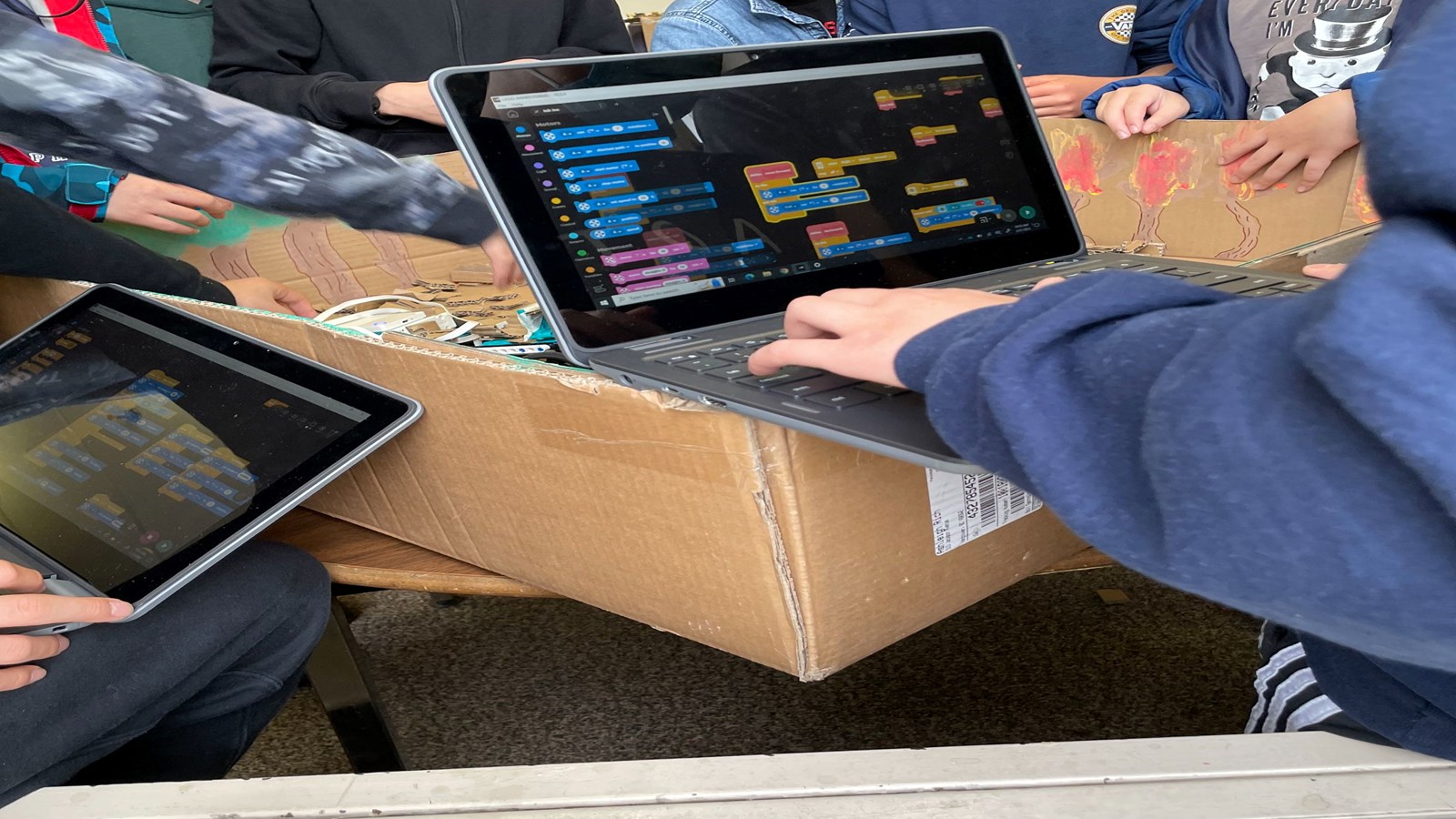Robots to the rescue: Students build robots programmed to respond to natural disasters

Students in the Gifted Enrichment Centre (GEC) Robotics & Engineering cohort were given the following prompt: “Disaster has struck, and the provincial government has hired your robotics engineering firm to be part of the recovery and restoration process.”
Student groups each selected a local natural disaster to solve. Disasters included: a Stanley Park windstorm, a landslide on a major highway, an earthquake in Vancouver, an avalanche on a local North Shore mountain, and a forest fire in the Interior.
After choosing their scenario, the groups researched impacts of their chosen disaster to design and program a robot that would provide a solution to the disaster. Students then worked collaboratively through the cycle of designing, prototyping, testing and revising their robots.
Grade 7 student Stephen was interested in designing a robot that would help with earthquake response. “Our robot will fly around and will have a heat detection signal to find people and when it finds people, it will deliver food,” he explains. “Theoretically, it will be programmed to detect heat from survivors and drop supplies where they’re needed.” Although Stephen’s prototype robot did not detect heat, his group used a red dot in place of heat for their robot to use as a target to drop supplies. Fully programmed by the students to run on its own, the robot fulfills its mission with one push of a button.
According to grade 7 student Ben, whose group built a snow drill robot that could access victims of avalanches, the best part of the project was the building and testing. “When our robot was complete, it just felt so nice to actually have it done and functioning, and to know that we created this.”
This project-based learning approach enables students’ interests and passions to drive their learning. For Alvin, the father of Stephen, this was a wonderful learning opportunity for his son. “Stephen really enjoyed the robotics and engineering program here. Even before the program, he was making things out of cardboard, amazing things that I wouldn’t think of making, like a skeet ball game or pinball machine. Hopefully the program will be here for many years to come. I’m just thankful to the VSB for having this program here.”
The GEC program provides rich, robust, and engaging learning activities. These activities include hands-on learning, such a building models, conducting experiments, and designing using digital platforms. The GECs also include project-based learning, field studies, and opportunities for students to present and share their new learning with others.





